Science in Wonderland
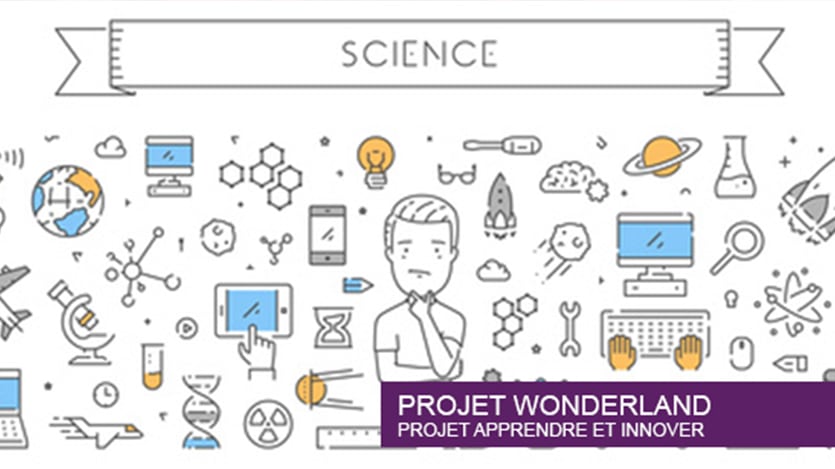
- Partners : University of Portsmouth, CESI
- Start of project: January 2009
- End of project: July 2014
- Call: INTERREG IVA France Manche Cooperation
- CESI Budget: 281.367 €
The project was included in the programme ‘‘Enseigner la physique autrement’’. It ran in parallel with the development of the PBL approach in Physics, and allowed to model the problems the students had to resolve using 3D simulations.
Presentation

The project ‘‘Science in Wonderland’’ arose from a common agreement between CESI and the University of Portsmouth on the fact that it was urgent to find solutions to make learning STEMS more attractive and also more innovative on the pedagogical side, considering the disaffection for scientific careers, and also the difficulties of students in these domains.
Within CESI, the Nord-Ouest region, a natural partner for Great Britain carried out the project, which was partially funded by FEDER and the Interreg IVA France-Manche cooperation.
Based on their respective competencies in Educational Sciences and in ITC applied to education, the partners proposed to make learning Sciences more concrete by using 3D simulation.
Main results
In all 5 simulations were developed and tested by groups of French and English students at Rouen and Portsmouth, within a PBL approach as it has been used by CESI for several years.
These simulations are part of the resources allowing to solve the problem-situations during the First Year Course in Physics in the curriculum “General Engineering”.
Publications
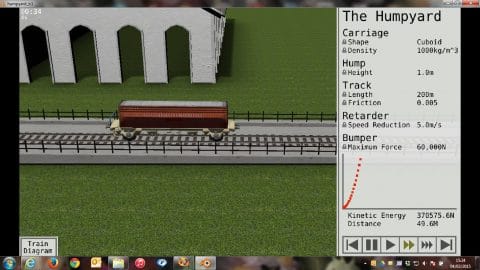
The Humpyar
Students have at their disposal 3 types of wagons that run down a slope and must go to its end, while slowing down enough to avoid ruining the bumpers. They must calculate the kinetic energy of each car and the braking force necessary to reduce their speed just enough.
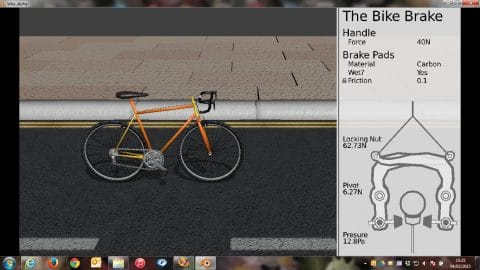
The bicycle break
In this simulation, students must find the force that is required to apply the brake and to stop the bicycle in a steep slope, taking into account the characteristics of the brake and of the wheel rim.
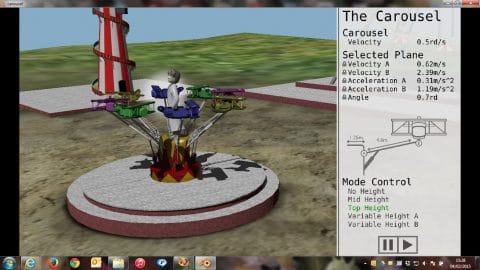
The carousel
An accident occurred in a carousel: one of the pods broke away, due to excessive speed. The students have to determine the conditions of the accident, and to calculate the force necessary to tear off the pod according to different parameters (rotational velocity, height of the pod…).
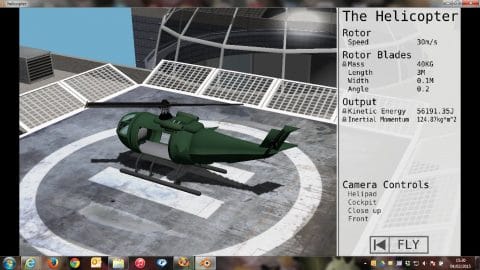
The helicopter
Students must choose as set of rotor blades that fits the helicopter. They can try their blades at different rotation speeds with different pitches. If the set of blades is correct, the helicopter can fly. Otherwise, it cannot take off, or it takes off a few meters and falls, or event it takes off and crashes.
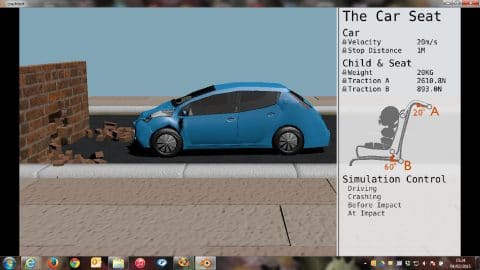
The child seat
In this simulation, students must calculate the force exerted on a child seat fixed
in a vehicle when a frontal impact occurs, and must verify if the specifications of the seat meet the standards in force.